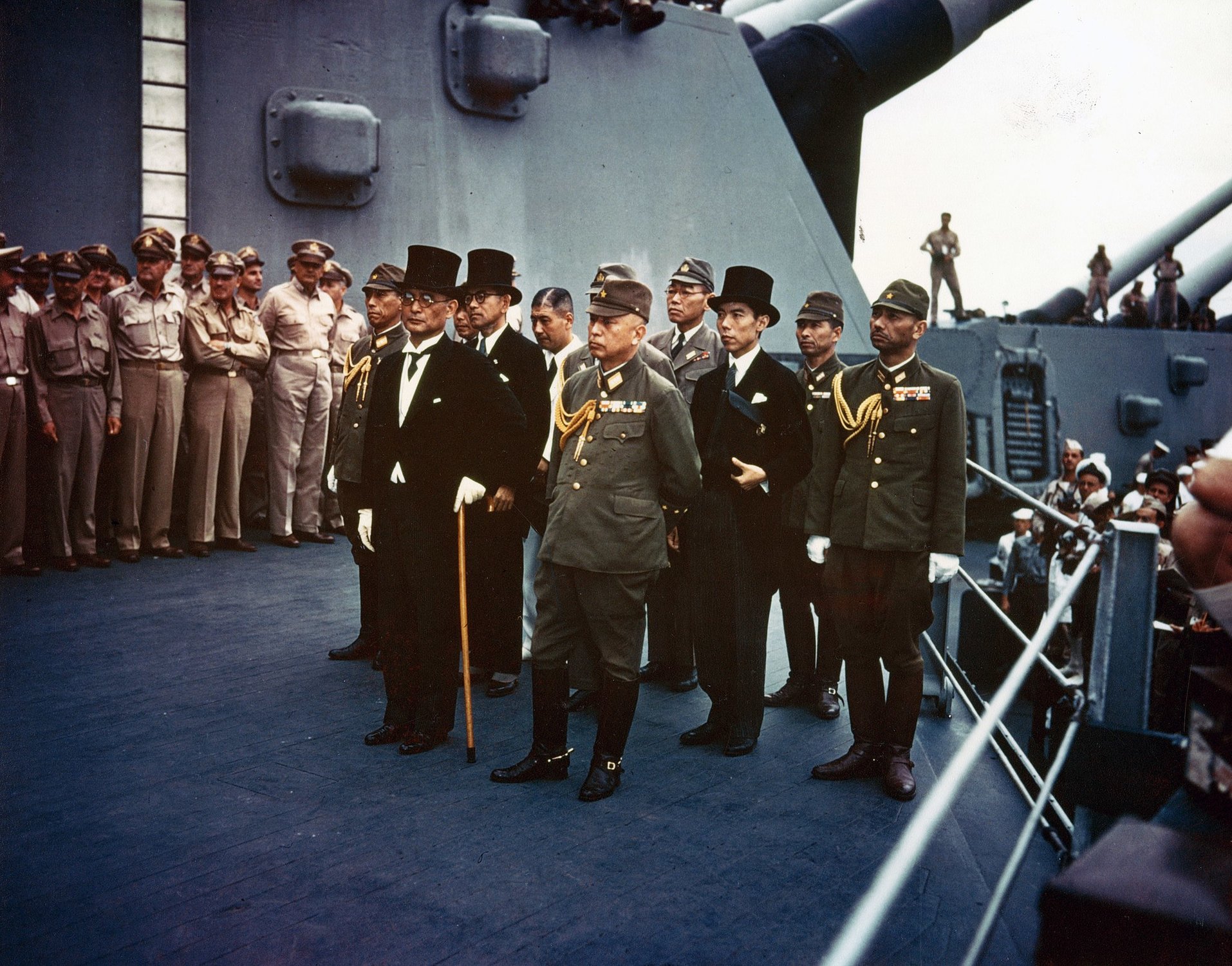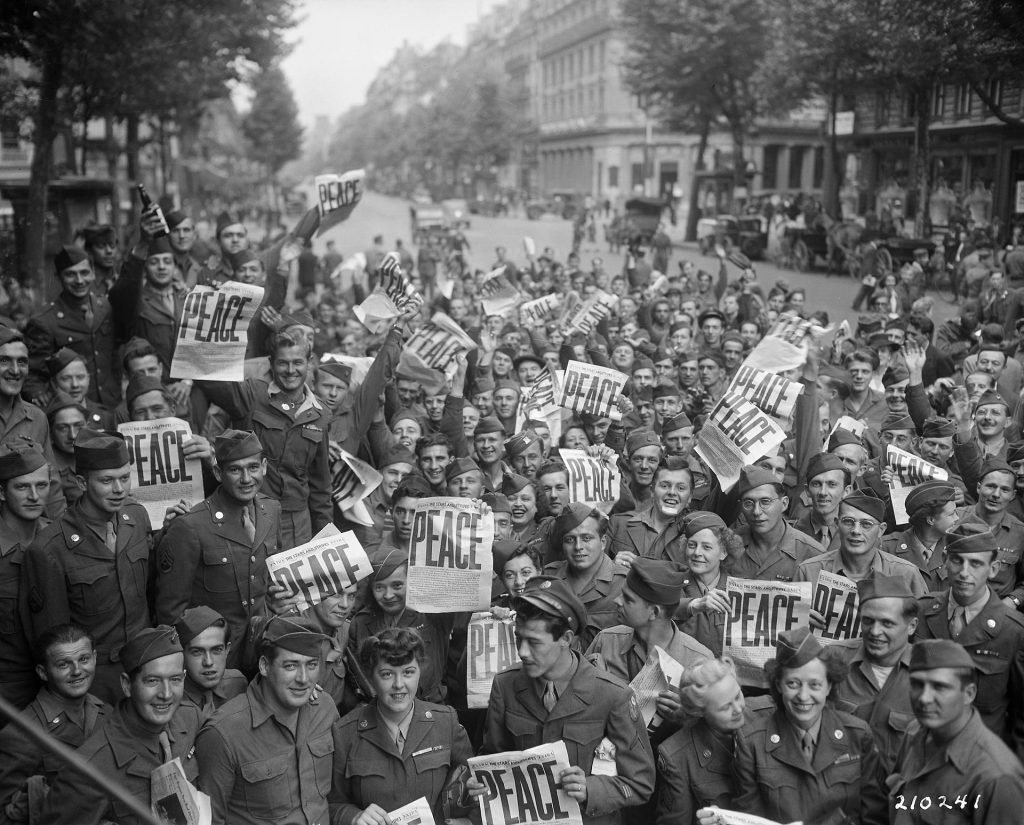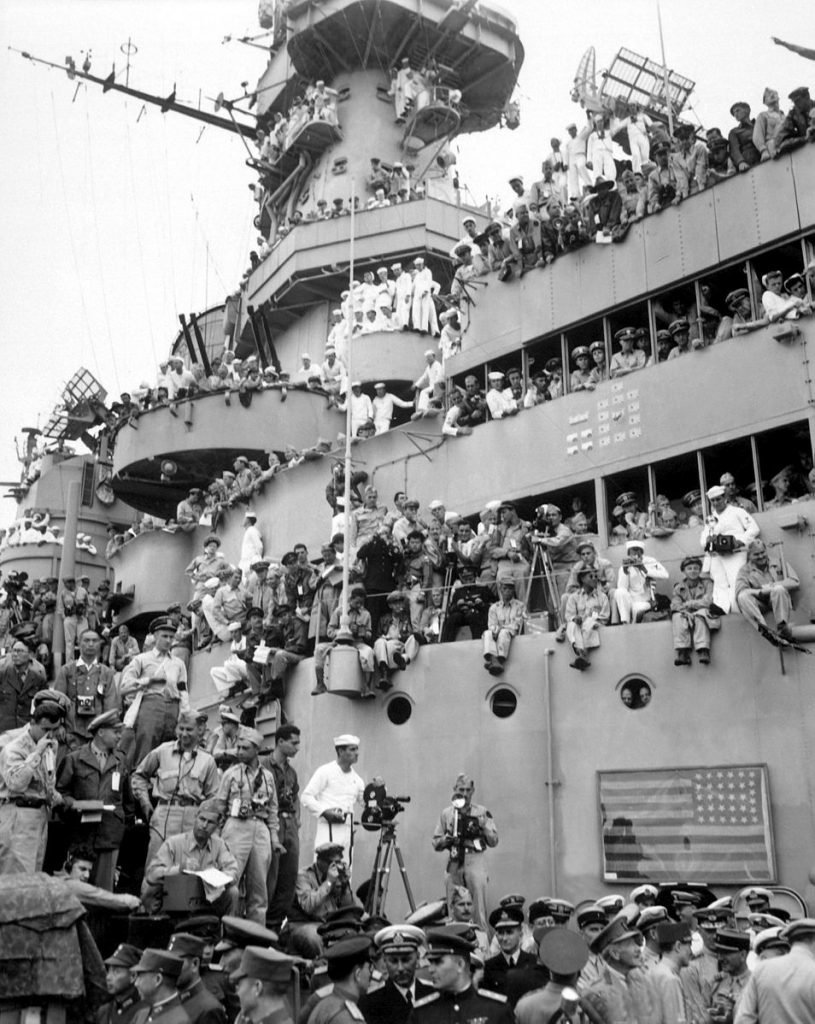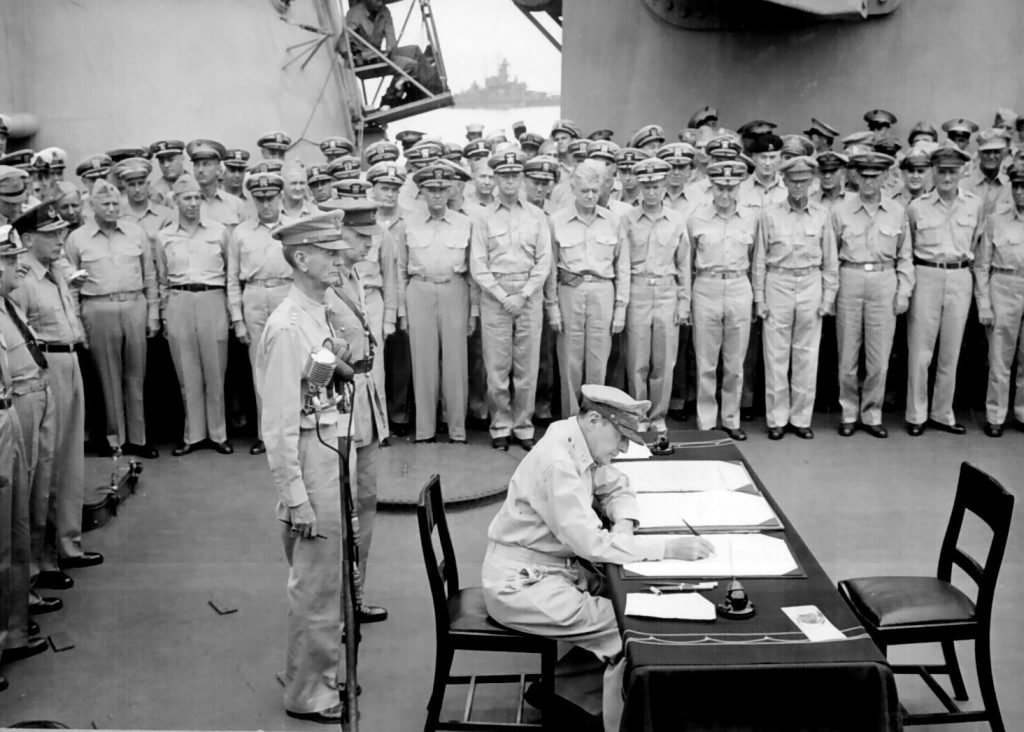The 75th Anniversary of Japan’s Surrender, the End of World War II

Japanese military leaders onboard USS Missouri during the surrender ceremony on September 2, 1945. Photo courtesy of Wikimedia Commons
At 10:04 p.m., six years to the day since Nazi Germany invaded Poland, sparking the beginning of World War II, New Yorkers took to Times Square. The crowd was abnormally small, especially considering the historic sight from the moving news bulletin on Times Tower. It indicated Japan’s formal surrender would be the following day, Sept. 2, 1945, and yet the citygoers applauded and cheered without a ruckus. Mayor Fiorello La Guardia even canceled the planned celebration at Central Park because “the people have had their big time and are satisfied.”
Their “big time” took place on Aug. 14, 1945, when President Harry Truman announced to the world Japan’s intentions to surrender. Nearly 2 million New Yorkers piled into the streets, transported into the city center by subways, buses, and their own two feet. Their celebratory cheers echoed around the buildings’ walls, and American flags were draped across lampposts for miles. One lucky US Navy sailor was even photographed by Life Magazine’s Alfred Eisenstaedt, sealing his place in history in what later became known as “The Kiss.”

The headlines celebrating the end of World War II and Victory over Japan Day (V-J Day) were finalized not in the city streets but from aboard the USS Missouri battleship parked in Tokyo Bay. Smaller boats in the bay ferried admirals and generals from Australia, Britain, Canada, China, France, the Netherlands, New Zealand, and the Soviet Union through 300 surrounding ships from several nations to the “Mighty Mo.”
The symbolic ceremony commenced just after 9 a.m. on Sunday morning, and Gen. Douglas MacArthur welcomed 11 representatives from Japan, including Foreign Minister Mamoru Shigemitsu and Gen. Yoshijiro Umezu. There was a moment of silence for prayer, followed by a patriotic rendition of the Star-Spangled Banner.
“It is my earnest hope, and indeed the hope of all mankind, that from this solemn occasion a better world shall emerge out of the blood and carnage of the past, a world founded upon faith and understanding, a world dedicated to the dignity of man and the fulfillment of his most cherished wish for freedom, tolerance and justice,” MacArthur said in a short speech.

MacArthur sat down in a chair surrounded by thousands of US Navy sailors and signed the declaration as the Supreme Commander for the Allied Powers to end the war. Adm. Chester Nimitz signed on behalf of the United States; Shigemitsu, on behalf of the Japanese government; Umezu, representing the Japanese military; and representatives of other spectating nations added their signatures as well.
“A million eyes seemed to beat on us with the million shafts of a rattling storm of arrows barbed with fire,” Japanese diplomat Toshikazu Kase later recalled. “Never have I realized that the glance of glaring eyes could hurt so much. We waited … standing in the public gaze like penitent boys awaiting the dreaded schoolmaster.”
The conclusion of the 23-minute ceremony was met with a flyover from B-29 Superfortress bombers and formations of carrier planes. The five pens used to sign the historic document were treasured souvenirs of the occasion. Gen. Jonathan Wainwright and British Gen. Arthur Percival, two witnesses to the moment, each received a pen, one each was gifted to the US Naval Academy and the US Military Academy at West Point, and the last was a personal memento for MacArthur himself.

MacArthur’s thoughts were broadcast to the world:
“Today the guns are silent. A great tragedy has ended. A great victory has been won. The skies no longer rain death — the seas bear only commerce, men everywhere walk upright in the sunlight. The entire world is quietly at peace. The holy mission has been completed. And in reporting this to you, the people, I speak for the thousands of silent lips, forever stilled among the jungles and the beaches and in the deep waters of the Pacific which marked the way. I speak for the unnamed brave millions homeward bound to take up the challenge of that future which they did so much to salvage from the brink of disaster.
“As I look back on the long, tortuous trail from those grim days of Bataan and Corregidor, when an entire world lived in fear, when democracy was on the defensive everywhere, when modern civilization trembled in the balance, I thank a merciful God that he has given us the faith, the courage, and the power from which to mold victory.”
His message brought forth reflections of a violent past and views of peace and prosperity for the future.

Matt Fratus is a history staff writer for Coffee or Die. He prides himself on uncovering the most fascinating tales of history by sharing them through any means of engaging storytelling. He writes for his micro-blog @LateNightHistory on Instagram, where he shares the story behind the image. He is also the host of the Late Night History podcast. When not writing about history, Matt enjoys volunteering for One More Wave and rooting for Boston sports teams.
BRCC and Bad Moon Print Press team up for an exclusive, limited-edition T-shirt design!
BRCC partners with Team Room Design for an exclusive T-shirt release!
Thirty Seconds Out has partnered with BRCC for an exclusive shirt design invoking the God of Winter.
Lucas O'Hara of Grizzly Forge has teamed up with BRCC for a badass, exclusive Shirt Club T-shirt design featuring his most popular knife and tiomahawk.
Coffee or Die sits down with one of the graphic designers behind Black Rifle Coffee's signature look and vibe.
Biden will award the Medal of Honor to a Vietnam War Army helicopter pilot who risked his life to save a reconnaissance team from almost certain death.
Ever wonder how much Jack Mandaville would f*ck sh*t up if he went back in time? The American Revolution didn't even see him coming.
A nearly 200-year-old West Point time capsule that at first appeared to yield little more than dust contains hidden treasure, the US Military Academy said.












